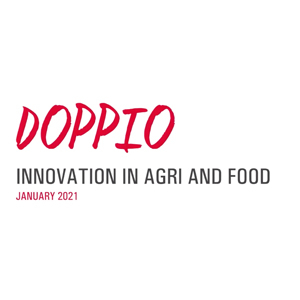Executives deal with limited resources and overlapping timelines and are often challenged to allocate resources to different projects. Even if priorities are clear, sourcing externally has to be justified. A wrong decision can lead to missing a critical deadline or losing a window of opportunity. When making a decision on deploying resources and assessing the incremental value generated by the efforts put into the project, the “return on effort” should be critical in making the decision. Although questions around this topic are not unfamiliar, the question remains,
can one really measure such a return?
If one was able to systematically estimate the return on effort in our projects, one could add the objectivity missing in the decision making process and present clear cases for colleagues, supervisors and sourcing departments. Service providers and clients could do a better job at prioritizing and evaluating the impact of their projects. As crucial as it sounds, many parties have only just started to try to get a better grasp on this. Some research has been done in the nonprofit space, but has little application to the projects with which we, at a-connect, typically deal. Academic research papers on measuring project outcome are often very complex or too simplistic. Applied efforts in consulting are measured mostly in the IT field. Interestingly enough, trials applied to independent professionals and flexible consulting models speak about concepts such us Return on Expertise and Return on Labor. All in all, the focus is put on assessing the cost, but not the effort. Only a few qualitative indicators of the full impact are available.
Aiming to get some answers in this challenging field, a-connect has developed an indicator on the return on effort (RoE™) which could fulfill both short- and long-term value creation objectives.
Let’s explore this area together!
1. Laying the ground
a-connect has drafted a formula, which is aimed to be simple, yet includes all relevant components.

2. Estimating the Return on Effort (RoE™): Incremental return and total cost
When measuring
return, the total incremental returns are to be taken into consideration. Beyond the obvious returns, this should also include e.g. positive stakeholder impact such as positive publicity due to early completion or over-achievement generated by a project.
In measuring
effort, it is important to capture the total costs associated with the project. Estimating the total cost of external and internal resources and the one off implementation costs are straightforward. It gets more difficult when measuring the opportunity costs of deploying internal resources to a specific project – or when measuring negative stakeholder impact due to e.g. project delays or lower productivity of people, due to changes in organizational structure.
3. Beyond the basics: Adjusting for risk, strategic fit and skills transfer
There are different risks in every project, so when measuring the return of a project, its risks need to be considered as well. One needs to assess the likelihood of success, but also consider if the project outcome fits with and supports the achievement of the overall company’s strategic goals. The latter is of particular importance if the project is transformational and includes a realignment of the organization to the company’s strategic goals.
Lastly, skills transfer and development multiplies the impact of any given project, if the project team benefits from the learning experience. The impact might be expanded if the acquired skills are highly relevant for future projects or daily tasks. In addition the project team members might be able to utilize acquired skills independently going forward. The composition of the project team will be the key driver for the level of skills development. Hence, a conscious decision should be made on which internal resources and which external partners to use for a project. When working with external partners, their delivery model will also impact the strength of the skills transfer multiplier. In general, the more integrated the internal and external resources work together and the more hands-on, previous experience the resources bring, the bigger the impact. For a-connect, knowledge and skill transfer have always been close to our heart, and a key element of our value proposition to clients.
4. Which inputs are needed to calculate the RoE?
a-connect recommends answering the following questions to estimate the RoE:
- How does this project fit with your overall strategy?
- What impact are you expecting as a direct result of the project?
- Which resources do you need in order to complete this project?
- What is the opportunity cost of internal resources for the project?
- What is the inherent risk of the project and likelihood of success?
- Can the project team benefit from skills and knowledge gained on the project?
Responding to these questions should become standard when considering kicking-off any initiative. Its application will establish a baseline and applying it systematically will result in a benchmark. Producing quantitative and objective “indicators” of the value generated by the efforts put into a project could be widely applicable within companies and different kinds of services providers.
At a-connect, we’ve been working on improving the fundamentals, as well as testing the concept with our clients. We are convinced the discussion around the elements in the RoE will help guide us and our clients to allocate different kind of resources and maximize the value of project portfolios. We expect this metric to be able to
“tell a story”.
Please let us know what you think, we are looking forward to your feedback!





